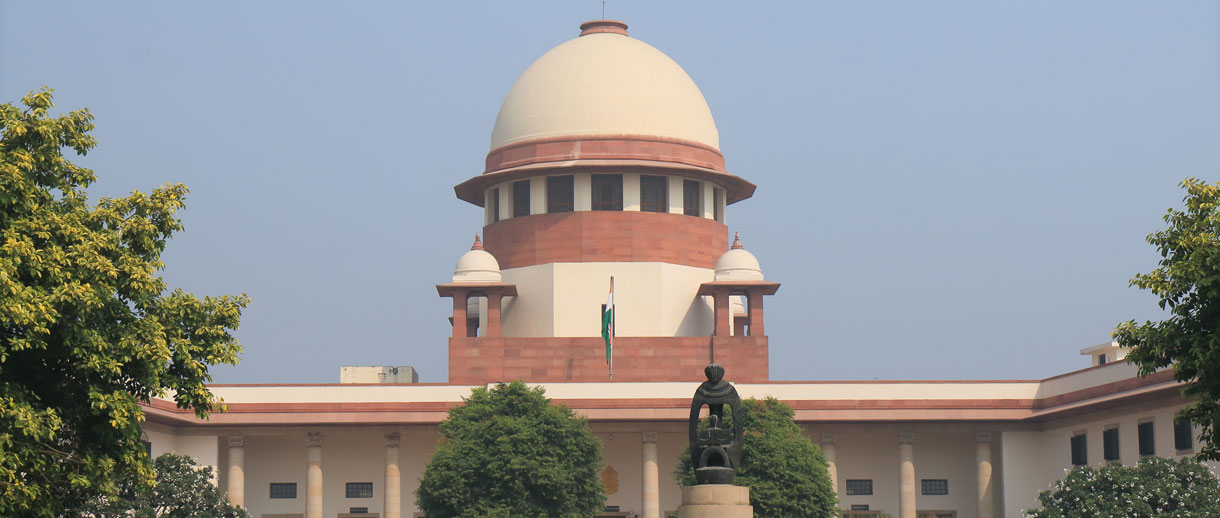
Partnerships in India are governed by the Indian Partnership Act, 1932 (“Act“). The Act defines partnership as ‘The relation between persons who have agreed to share the profits of a business carried on by all or any of them acting for all‘. The Act while laying down the provisions with respect to rights and duties of the partners also details the consequences of retirement of a partner and dissolution of a partnership firm.
In a recent judgment, the Supreme Court while distinguishing between retirement of a partner and dissolution of a partnership firm, has held that when there are only two partners in a partnership firm, retirement of one partner will amount to dissolution of the firm.
The dispute arose in the case of Guru Nanak Industries, Faridabad and Another v/s Amar Singh (Dead) through Legal Representatives1. A partnership firm was constituted in 1978 between four people, i.e. Swaran Singh the second appellant herein, Amar Singh and two other partners. On the retirement of the other two partners, Swaran Singh and Amar Singh executed a fresh partnership deed between themselves in 1981.
In 1989, Guru Nanak Industries and Swaran Singh filed a suit against Amar Singh claiming that Amar Singh had retired from the partnership effective August 24, 1988 and had voluntarily accepted payment of his capital. The appellants further claimed that Amar Singh had been given a loan from the funds of the partnership and had hence agreed that he would not be entitled to any profits or liabilities of the firm. The main claim of the appellants was that since Amar Singh had resigned as a partner, he would only be entitled to the capital standing in his credit in the book of accounts in terms of the clause of the partnership deed. Amar Singh contested the claim stating that he had never retired from the firm. Amar Singh claimed that the evidence filed by the appellants including a letter and a receipt had manipulations and certain statements were added to them later on. Amar Singh argued that the receipt filed by the appellants clearly showed that he was only paid a part payment in terms of the settlement between him and Swaran Singh. Further the receipt stated this amount was being received by Amar Singh with regard to dissolution of the firm and the last line claiming his total amount is settled and nothing is due to him from the appellants was forged. Amar Singh also filed a suit for partition and rendition of accounts of the firm.
The Supreme Court noting the manipulations on the letter and receipt, rejected the argument of the appellants, and held that there were only two partners in this case and the evidence on record supported the respondent’s claim that he had not retired from the firm. The Supreme Court further held that there was mutual understanding and agreement between the parties to dissolve the firm.
The Supreme Court while dismissing the appeal, made a clear distinction between ‘retirement of a partner’ and ‘dissolution of a partnership firm’. The Supreme Court stated that on retirement of a partner, the reconstituted firm would continue and the retiring partner would be paid his dues in terms of Section 37 of the Act. In the case of dissolution of a partnership firm, the accounts would have to be settled and distributed as per Section 48 of the Act. The Supreme Court relying on the judgement rendered in the case of Pamuru Vishnu Vinodh Reddy v. Chillakuru Chandrasekhara Reddy and Others2, stated that when the partners agree to dissolve a partnership, it is a case of dissolution and not retirement. Since in the present case, the partnership only had two partners, the Supreme Court held that the partnership firm could not continue to carry on the business of the firm on retirement of one partner. The Court reiterated that a partnership firm must have two partners. Further reliance was placed on Erach F.D. Mehta v. Minoo F.D. Mehta3, wherein it was held that when there are only two partners in a firm and one had agreed to retire, the retirement would amount to dissolution of the firm.
The Supreme Court has thus reiterated the stand that for a partnership to survive, there must be more than one partner. Even the definition of partnership states that it is a ‘relation between persons‘ implying that a partnership must consist of two or more persons. Hence as is held in the present case, in a partnership firm comprising of two persons, on the retirement of one partner, the firm will automatically dissolve and the provisions for dissolution of a partnership firm under the Act would apply.
















